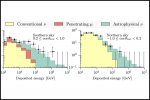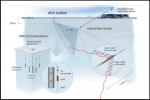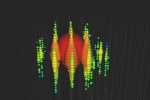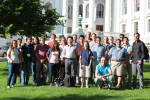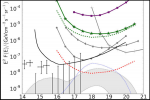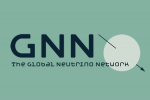A search for neutrino interactions inside IceCube brought evidence of an extraterrestrial neutrino flux. Now the IceCube Collaboration has expanded the search, lowering the range of deposited energy down to 1 TeV.
A few years after the completion of IceCube, one of the major goals of building this strange cubic-kilometer detector at the South Pole has already been accomplished: the unequivocal observation of an astrophysical neutrino flux.
Strong evidence for a very high energy neutrino flux of extraterrestrial origin was found in November 2013, and new data from IceCube now confirms the discovery. Once more, the Antarctic detector brings us still the highest energy neutrino ever observed. This 2-PeV neutrino event was detected by IceCube on Tuesday, December 4, 2012. It was dubbed “Big Bird.”
The ARA Collaboration announces today the first results using data taken during 10 months in 2013. Researchers performed a search for UHE neutrinos that resulted in no neutrino candidates but allows setting a neutrino flux limit in the energy range where most UHE neutrinos are expected to be observed.




